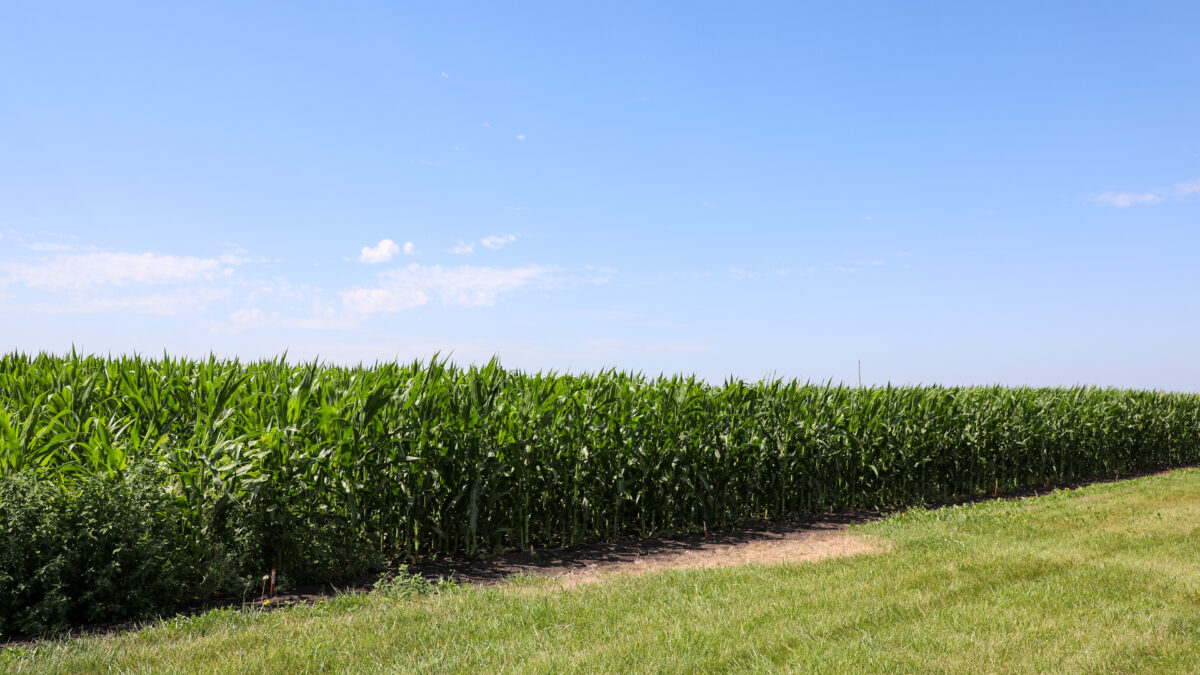Dicamba Decision: A Critical Blow to Crops Already Planted

photo credit: Right Eye Digital, Used with Permission
UPDATE: EPA has issued a cancellation order for three dicamba herbicides. The agency will allow farmers to use existing stocks that were in their possession as of June 3. Farmers will have to use these existing stocks according to their former labels, and apply no later than July 31.
Each year millions of acres of corn, soybeans and cotton are planted across the U.S. USDA’s most recent Prospective Planting report indicated that in 2020 farmers intend to plant 97 million acres of corn, 84 million acres of soybeans and nearly 14 million acres of cotton. A majority of these crop acres are planted to herbicide-tolerant varieties designed to effectively control weeds, which compete with crops for water, sunlight and nutrients in the soil. Without effective weed control, farmers would have much smaller yields.
Two of the most prominent herbicide-tolerant varieties are dicamba-resistant cotton and soybeans. However, a recent Ninth Circuit Court of Appeals decision vacating the registrations of three dicamba herbicides, Bayer’s Xtendimax, BASF’s Engenia and Corteva’s FeXapan, means that effective immediately, cotton and soybean farmers can no longer arguably spray dicamba herbicides on these crops. This is especially problematic because, according to USDA’s most recent Crop Progress report, as of May 31, 75% of soybean acres and 66% of cotton acres have been planted. Today’s article reviews recent trends in herbicide-tolerant acreage for cotton, soybeans and corn.
Trends in Herbicide-Tolerant Varieties
USDA data shows that in 1996 approximately 7% of soybean acres, 3% of corn acres and 2% of cotton acres were planted to herbicide-tolerant varieties. By 2000, 54% of soybeans, 46% of cotton and 7% of corn acres were planted to herbicide-tolerant varieties – either herbicide-tolerant or a stacked insecticide and herbicide-resistant variety. Soybean herbicide-tolerant acreage began to plateau in the mid-2000s, and now each year approximately 94% of soybean acreage is planted to a herbicide-resistant variety. Similarly, within the last decade, the percent of herbicide-resistant cotton and corn acreage has plateaued at more than 90%, Figure 1.

In terms of total acreage, over the last five years an average of 80 million acres of corn, 79 million acres of soybean and nearly 11 million acres of cotton have been planted to a herbicide-resistant variety. In 2020, 194 million acres of corn, soybeans and cotton combined are estimated to have been planted – up 8% from 2019 (Note: Nearly 20 million acres were prevented from being planted in 2019, e.g., Prevent Plantings Set Record in 2019 at 20 Million Acres). Of these acres, and based on historical trends, it’s estimated that approximately 91%, or 177 million acres, were planted to a herbicide-tolerant variety, Figure 2.

Summary
Over the last two decades, the percentage of corn, cotton and soybean acreage planted to herbicide-resistant crops has grown from less than 40% of planted area to more than 90%. These herbicide- and insect-resistant varieties help improve farm productivity and conserve natural resources such as water and soil nutrients by controlling weeds and invasive species.
Now, after farmers have already planted most of their cotton and soybean acres, the Ninth Circuit Court of Appeals has vacated the registrations of three dicamba herbicides — Bayer’s Xtendimax, BASF’s Engenia and Corteva’s FeXapan. As a result, effective immediately, cotton and soybean farmers can no longer arguably spray dicamba herbicides on these crops. Farmers with these dicamba-resistant crops are now faced with the difficult task of finding other herbicides that will protect their crops as effectively.
To help farmers affected by the ruling, organizations including the American Farm Bureau Federation are requesting the Environmental Protection Agency issue an existing stocks order, which would allow farmers to have access to dicamba for this growing season. Farmers must maintain access to dicamba products that have already been purchased, as well as those that remain in the supply chain to be applied later by custom applicators or farmers themselves in accordance with the current EPA label.
While it is unclear how EPA plans to react to the Ninth Circuit Court of Appeals’ decision, options include seeking a stay of the current decision or limiting the court’s decision to only apply to the states in the Ninth Circuit. While the EPA has jurisdiction over the pesticide registration review process, Agriculture Secretary Perdue has signaled his support for maintaining access to dicamba this growing season.
UPDATE: EPA has issued a cancellation order for three dicamba herbicides. The agency will allow farmers to use existing stocks that were in their possession as of June 3. Farmers will have to use these existing stocks according to their former labels, and apply no later than July 31.
